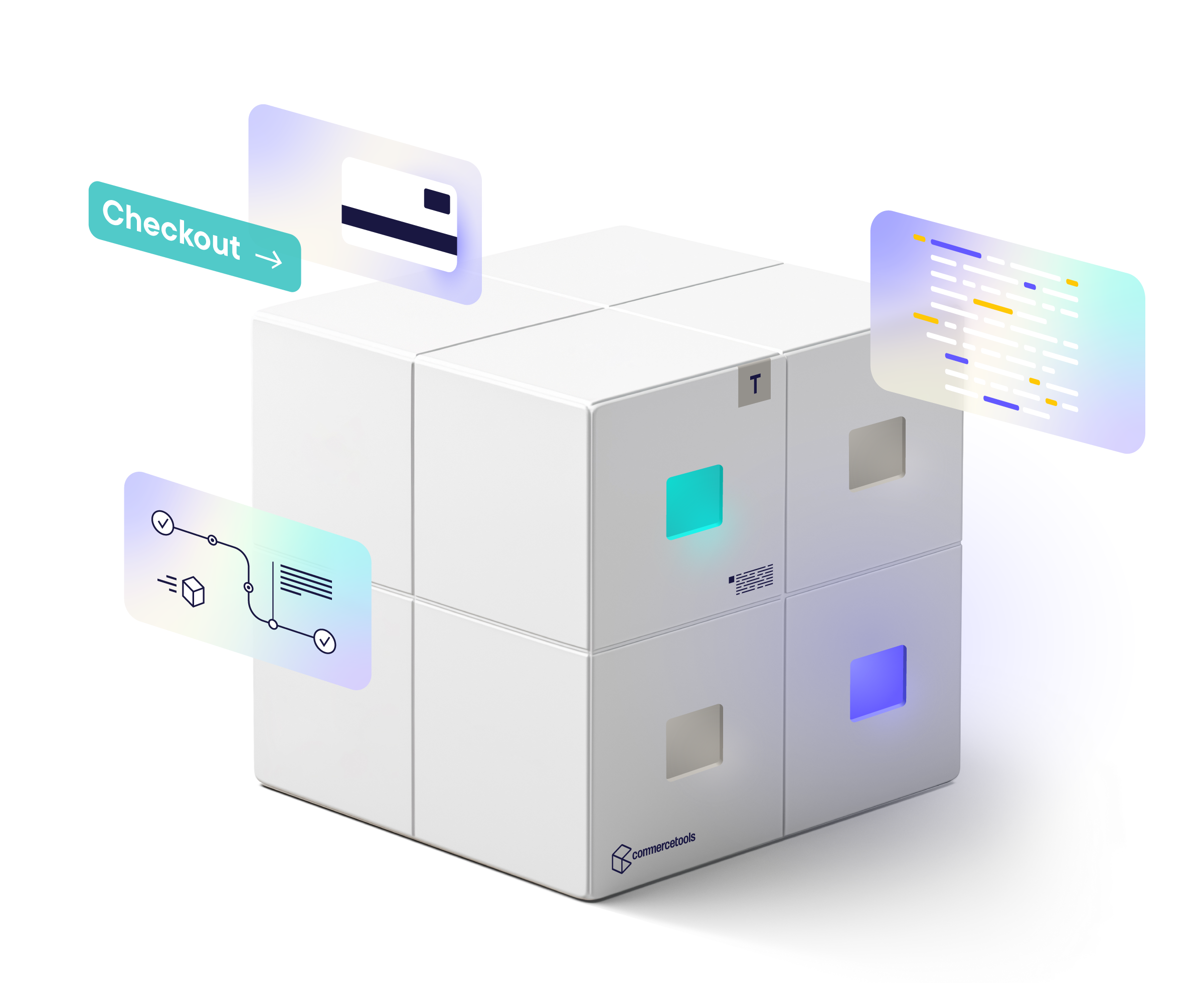Composable commerce. Flex for what’s next.
The key to navigating today’s commerce complexity? Flexible, agile tech that bends — never breaks. Discover how to bend it with composable commerce.
Talk to an expert
Is your legacy tech limiting your growth?
Monolithic, legacy platforms were built for web checkout — not AI-native journeys. As buyer behavior changes at warp speed, the rigid structure of monoliths and brittle integrations can’t adapt fast enough.
If your commerce tech isn’t future-ready and it’s limiting your growth, the solution is clear: Composable commerce.
What’s composable commerce?
Composable commerce is a modern approach to building commerce platforms, using a collection of independent best-of-breed components or modules to create a customized solution. It focuses on flexibility, scalability and agility, allowing businesses to adapt their technology stack to specific needs and easily integrate new technologies as they emerge rather than relying on a single vendor's one-size-fits-all solution.
The result: Maximum flexibility, agility and freedom to design experiences for your customers.
The benefits of composable commerce for enterprises.
Modular components to build, test and change without disruption or downtime. Bring in the latest AI or emerging tech with ease — no vendor lock-in.
Cloud-native infrastructure with auto-scaling that keeps performance sharp, even on your biggest days.
Combine real-time, centralized data with AI agents capable of autonomous decision-making for every step of commerce.
Say goodbye to monolith maintenance, versioning and upgrade cycles. Optimize tech spend and reduce costs over time.
Work with versionless, tech-agnostic architecture, clean APIs and strong documentation to accelerate innovation.
Easily expand into new brands, channels and markets. Stay ready for emerging tech like AI agents. No replatforming needed, ever.
How to compose your commerce in 2025
Explore the benefits of composable commerce, actionable implementation strategies and best practices for driving growth in the digital-first era.

The foundational layer for the agentic era.
Composable commerce provides the modular, API-first and scalable infrastructure that agentic AI depends on.
Machine-readable data by default
Product data, pricing, inventory and promotions are easily accessible to AI agents, so they can discover, compare and act on offers in real time.
Adapt and customize as AI capabilities evolve
Tweak, replace or enhance modules without disrupting the entire system, ensuring AI-driven experiences remain aligned with changing customer needs.
Scale infrastructure for real-time interactions
Agentic AI will drive more interactions that require instant responses. Handle these real-time demands at scale, and keep experiences fast, reliable and seamless.
Leading enterprises reimagining commerce with composability.
The brands, retailers and B2B organizations leveraging the commercetools composable commerce platform to outperform.
How to compose your commerce with commercetools
commercetools Composable Commerce
Explore:

commercetools Foundry
Explore:

Agentic Commerce and co.
Explore:

Choose the next step to start your commercetools journey.
Frequently asked questions
Why is everyone talking about composable commerce?
Traditional eCommerce solutions, also known as legacy or monolithic platforms, are indivisible blocks of standardized software that are hard to customize and slow to update. Every time you change or update something, the entire system must be retested and redeployed, which may cause issues or even a complete system crash.
This inherent lack of flexibility and agility doesn’t compute at today’s accelerated pace; consequently, companies struggle to innovate and even hire and retain talent (unsurprisingly, top engineers aren’t eager to work with old technologies). Plus, the cost of running monolithic infrastructures has become prohibitive due to additional fees for upgrades, integrations, etc.
Composable commerce is gaining traction because it’s the answer for businesses to manage constant change in their customer experiences without spending a fortune. Companies can shift from a monolithic approach to maximum flexibility in their technology stacks, so they’re adaptable to whatever the future brings. Through composable technology, businesses can enable unified commerce to provide a holistic view of all commerce operations in one place.
How to start your composable commerce journey?
Embracing composable commerce doesn’t require a complete overhaul all at once. Brands can start by addressing their main pain points or missed opportunities, such as enhancing an unstable checkout flow during high-traffic periods. Such incremental changes enable companies to tackle issues one at a time and realize business value faster.
commercetools empowers companies to overcome the key challenges of migrating to composable commerce with this phased approach — also known as the strangler pattern. This monolith-to-composable migration method enables brands to break their platform into small pieces as microservices and slowly replace those with single components incrementally. Over time, the monolith will start to “suffocate” and eventually disappear.
Moreover, commercetools provides you with all the best practices you need to successfully migrate to composable commerce in only seven steps.
What’s the difference between composable commerce and unified commerce?
At first glance, composable commerce and unified commerce may seem at odds, but they are actually complementary. Composable commerce provides a flexible architecture that lets companies plug in, customize, and integrate best-of-breed solutions. Unlike rigid monolithic platforms, it allows features to be adapted and modules swapped without disrupting the system. By leveraging pre-built components from commercetools or other providers — or integrating your own — businesses can create seamless, unified shopping experiences.
In short, composable is the architecture, and unified commerce is the outcome. This approach gives retailers the freedom to innovate while delivering the cohesive, high-quality experiences customers expect.
What’s the difference between composable and headless commerce?
Headless is an eCommerce approach that decouples the frontend from the backend commerce functionality. This way, it’s possible to update/edit the frontend without interfering with the backend, and vice versa. Headless was the first step in breaking down legacy monolithic platforms.
Composability takes the idea of headless further: Essentially, composable breaks down the commerce infrastructure into individual components. That said, every composable infrastructure is headless, but not every headless infrastructure is composable. Get all the details
Is commercetools truly composable?
commercetools is a leading composable commerce platform, widely recognized by market analysts such as Gartner and IDC. By embodying the key core traits of composable commerce — flexible components, cloud-native SaaS and a tech-agnostic approach — commercetools is the right choice for brands looking to harness the full potential of composable technology.
With over 500 commerce APIs and success stories across B2B, B2C and D2C companies, commercetools also boasts a best-in-class ecosystem of 175+ partners across EMEA, the US and APAC, offering unparalleled support and innovation opportunities for every commerce possibility.
How to accelerate your composable commerce implementation?
Implementing composable commerce doesn’t have to be a complex endeavor. On the contrary, turbocharging composable implementations have never been easier and faster. With the rise of pre-composed solutions, such as commercetools Foundry for B2C Retail and B2B Manufacturing, your business has all the components to kickstart your commerce project — without risk and at speed.
Plus, leverage additional options to expedite your implementation even further with commercetools, such as Premium Support and Expert Services.








